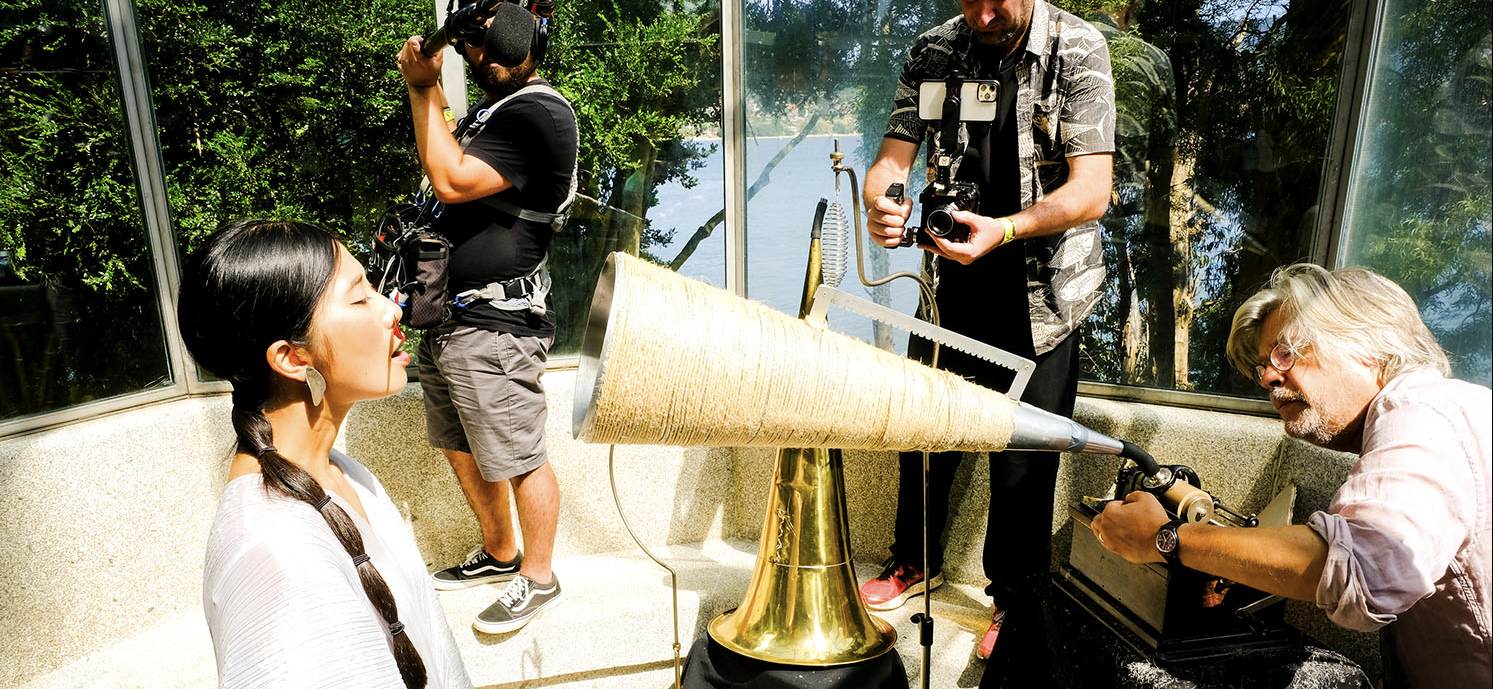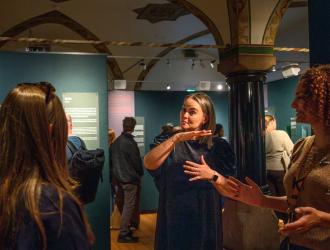The First Sound Recordings – Experience the Magic of the Phonograph
Edison’s Phonograph
In 1877, the American inventor Thomas Edison created the phonograph – the world’s first commercial device for recording and reproducing sound. But how did it actually work when music and voices were recorded on wax cylinders without the use of electricity? What did the recordings sound like? And what ideas surrounded the experience of reproduced sound?
In this talk, you can experience a live wax cylinder recording – exactly as it was performed in the early phonograph studios. Watch and listen as sound is physically inscribed into the wax and then played back immediately on an original Edison phonograph – all without electricity.
Step into the world of the phonograph with international experts
Melissa van Drie and Aleksander Kolkowski will offer insight into the history of the phonograph and its many uses within and beyond the entertainment industry. They will also demonstrate how contemporary artists, archivists, and researchers are rediscovering the phonograph as a tool of fascination and creativity.
Please note
The talk will be in English.
About the speakers
Aleksander Kolkowski is a violinist, composer and researcher. Since the early 2000s, he has worked with wax cylinder recordings and has created an online archive featuring musicians, writers, and artists. Kolkowski was sound artist-in-residence at the Science Museum, London and at the British Library Sound Archive.
Melissa van Drie is a musicologist, cultural historian, and performance artist researching sound, body, and sensory perception as ways of creating and sharing knowledge. She holds a PhD from Sorbonne Nouvelle in Paris and has conducted research at the University of Copenhagen and the University of Cambridge.
Contact
Københavns Museum
Stormgade 18


